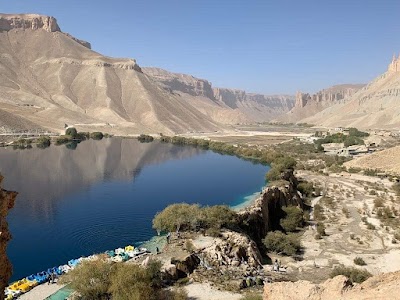Historical Sites of Panjshir (محل های تاریخی پنجشیر)
Overview
Panjshir, a breathtaking valley nestled in the majestic Hindu Kush mountains of Afghanistan, is renowned for its stunning natural beauty and rich historical significance. The name "Panjshir," meaning "Five Lions," is inspired by local legends of five brothers who ingeniously constructed the valley's irrigation system. Located approximately 150 kilometers northeast of Kabul, Panjshir has served as a strategic and cultural hub for centuries, offering a wealth of historical sites for adventurous travelers to explore.
Mausoleum of Ahmad Shah Massoud
One of the most significant historical landmarks in Panjshir is the Mausoleum of Ahmad Shah Massoud, an Afghan national hero celebrated for his military leadership. Often referred to as the "Lion of Panjshir," Massoud played a pivotal role in resisting the Soviet invasion during the 1980s and later fought against the Taliban regime. His mausoleum, situated in Bazarak, the provincial capital, is a stunning architectural feat that merges traditional Afghan craftsmanship with modern design elements. Visitors can pay their respects and delve into Massoud's life and his profound impact on Afghanistan's history.
Panjshir Valley Road
Another noteworthy site is the Panjshir Valley Road, also known as Massoud Boulevard. This scenic route meanders through the valley alongside the Panjshir River, offering breathtaking views of surrounding mountains and lush landscapes. More than just a picturesque drive, this road is steeped in history, having witnessed numerous military campaigns and trade activities over the centuries. Travelers along this route can explore ancient forts and watchtowers that dot the landscape, each stone structure revealing stories of the valley's strategic significance in past conflicts.
Ancient Rock Carvings
Panjshir is also home to ancient rock carvings that date back to the Kushan Empire, which ruled the region around the 1st century AD. These carvings depict various scenes, from religious motifs to everyday life, providing valuable insight into the culture and beliefs of Panjshir's early inhabitants. Among the most notable is the image of a Buddha, a testament to the historical influence of Buddhism in the area prior to the advent of Islam.
Emerald Mines
In addition to its historical and cultural treasures, Panjshir is famous for its emerald mines, which boast some of the richest emerald deposits in the world. Mining has been an integral part of the valley's history for centuries. Visitors can tour the mines and even purchase high-quality, locally sourced emeralds. Guided tours often showcase both traditional and modern mining techniques, allowing travelers to appreciate the evolution of this age-old craft.
Religious Sites
The valley is also dotted with ancient mosques and madrasas, which have served as centers of learning and spirituality for generations. Among the oldest and most revered is the Khwaja Abdullah Shrine, attracting pilgrims from across Afghanistan. This shrine, dedicated to a renowned Sufi saint, features intricate tile work and Arabic calligraphy, creating a serene atmosphere for contemplation and worship.
Recent History
For those interested in more contemporary history, Panjshir offers a glimpse into the Soviet-Afghan War and subsequent civil conflicts. Numerous battlefields and war memorials are scattered throughout the valley, each with its own poignant story to tell. The remnants of Soviet tanks and armored vehicles serve as stark reminders of the region's turbulent past and the resilience of its people.
Despite its historical richness, Panjshir remains relatively unexplored by international tourists, making it an ideal destination for those seeking an off-the-beaten-path experience. The local population is renowned for their hospitality and pride in their cultural heritage, often welcoming visitors with open arms and sharing captivating stories about the valley's rich history.
In summary, Panjshir is a hidden gem brimming with historical sites that beautifully blend natural beauty and cultural heritage. From the Mausoleum of Ahmad Shah Massoud to ancient rock carvings and emerald mines, the valley is steeped in history and plays a vital role in Afghanistan's cultural tapestry. For foreign tourists, a visit to Panjshir promises not just stunning landscapes but also a profound exploration of the rich narratives that have shaped this resilient region.



